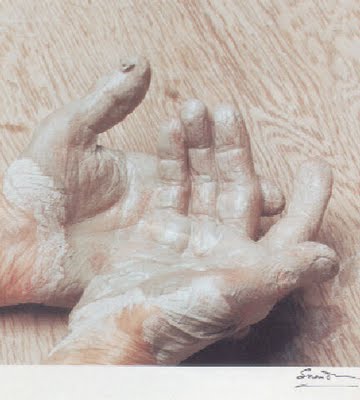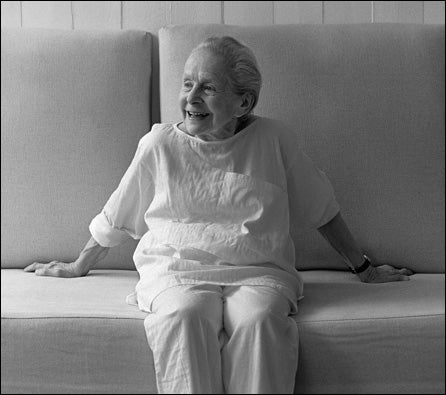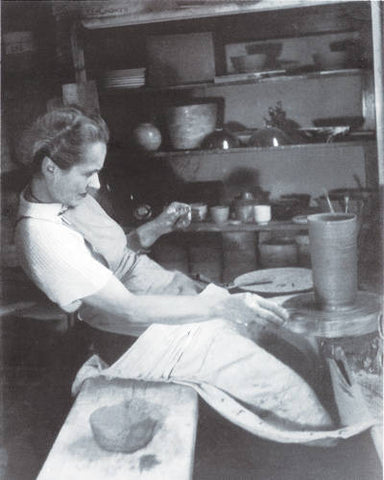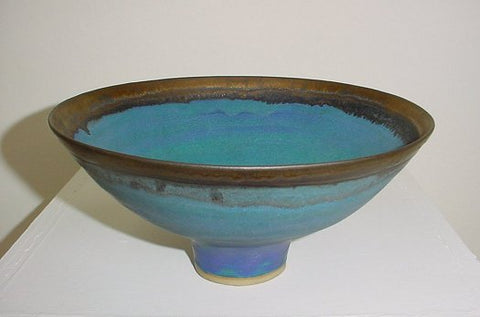Lucie Rie Working




















Lucie Rie at her front door, photo by Jim Hair. Then Lucie’s pots arranged on the Plischke shelves at Albion Mews, 1950.
Lucie Rie was born on March 6, 1902 to a prominent family in Vienna. In 1922 she entered the Kunstgewerbeschule, a school of arts and crafts associated with the Wiener Werkstätte, where she was, she said, instantly ‘”lost” to the potter’s wheel. She developed quickly, combining a taste for a clean, modernist aesthetic with daring technical skill.
In 1926, she married and commissioned an apartment from a young Viennese architect, Ernst Plischke, on Andreasgasse. Lucie had purchased a chair from Plischke and like it so much that she asked him to furnish her entire apartment. It was his first commission. Plischke designed every detail of the flat to suit the young potter, including studio space with a gas-fired kiln and, in the living room, walnut cupboards with versatile shelves that could be rearranged to display her work. When Lucie fled to London in 1938, she had the entire interior shipped over and re-erected in a mews house in Bayswater, where she lived and worked, to great renown, for the next 50 years. After she passed, the studio was moved and reconstructed again, this time in the Victoria and Albert Museum‘s ceramics gallery.
Lucie is often described as steely and too rigorous to be a good teacher, though she had a lasting mentorship turned creative partnership with Hans Coper and always made time to meet with anyone with a serious interest in pottery. Those who qualified for her time were invited over to her studio for tea, cake, and serious conversation, so long as it wasn’t technical talk about pottery.
Read more about this great dame on the VADS essay site set up for her in a nice timeline format and with lots more great images. The best spot to check out images of her work is through Galerie Besson, which represented her.

 Pouring bowl, c.1952 and another portrait of Dame Lucie by Snowdon.
Pouring bowl, c.1952 and another portrait of Dame Lucie by Snowdon.







Leave a comment